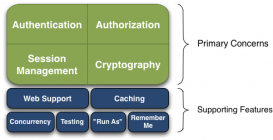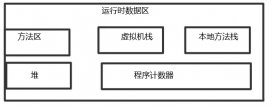问题为对接一个sso的验证模块,正确的对接姿势为,接入一个 filter, 然后接入一个 ssolistener 。
然而在接入之后,却导致了应用无法正常启动,或者说看起来很奇怪,来看下都遇到什么样的问题,以及是如何处理的?
还是 web.xml, 原本是这样的: (很简洁!)
|
1
2
3
4
5
6
7
8
9
10
11
12
13
14
15
16
17
18
19
20
21
22
23
24
25
26
27
28
29
30
31
32
33
34
35
|
<?xml version="1.0" encoding="utf-8" ?><web-app xmlns="http://java.sun.com/xml/ns/javaee" xmlns:xsi="http://www.w3.org/2001/xmlschema-instance" xsi:schemalocation="http://java.sun.com/xml/ns/javaee http://java.sun.com/xml/ns/javaee/web-app_3_0.xsd" version="3.0"> <display-name>xx-test</display-name> <filter> <filter-name>encodingfilter</filter-name> <filter-class>org.springframework.web.filter.characterencodingfilter</filter-class> <init-param> <param-name>encoding</param-name> <param-value>utf-8</param-value> </init-param> <init-param> <param-name>forceencoding</param-name> <param-value>true</param-value> </init-param> </filter> <filter-mapping> <filter-name>encodingfilter</filter-name> <url-pattern>/*</url-pattern> </filter-mapping> <servlet> <servlet-name>spring</servlet-name> <servlet-class>org.springframework.web.servlet.dispatcherservlet</servlet-class> <init-param> <param-name>contextconfiglocation</param-name> <param-value>classpath:spring/spring-servlet.xml</param-value> </init-param> <load-on-startup>1</load-on-startup> </servlet> <servlet-mapping> <servlet-name>spring</servlet-name> <url-pattern>/</url-pattern> </servlet-mapping></web-app> |
而需要添加的 filter 如下:
|
1
2
3
4
5
6
7
8
9
10
11
12
13
14
15
16
17
18
19
20
21
22
23
|
<filter> <filter-name>sessionfilter</filter-name> <filter-class>com.xxx.session.redissessionfilter</filter-class></filter><filter-mapping> <filter-name>sessionfilter</filter-name> <url-pattern>/*</url-pattern></filter-mapping><listener> <listener-class>com.xx.session.ssohttpsessionlistener</listener-class></listener><filter> <filter-name>ssofilter</filter-name> <filter-class>com.xxx.auth.ssofilter</filter-class></filter><filter-mapping> <filter-name>ssofilter</filter-name> <url-pattern>/*</url-pattern></filter-mapping><context-param> <param-name>configfilelocation</param-name> <param-value>abc</param-value></context-param> |
另外再加几个必要的配置文件扫描!对接完成!不费事!
然后,我坑哧坑哧把代码copy过来,准备 commit 搞定收工!
结果,不出所料,server 起不来了。也不完全是启不来了,就只是启起来之后,啥也没有了。
sso 中也没啥东西,就是拦截下 header 中的值,判定如果没有登录就的话,就直接返回到 sso 的登录页去了。
那么,到底是哪里的问题呢?思而不得后,自然就开启了飞行模式了!
下面,开启debug模式!
本想直接 debug spring 的,结果,很明显,失败了。压根就没有进入 spring 的 classpathxmlapplicationcontext 中,得出一个结论,spring 没有被正确的打开!
好吧,那让我们退回一步,既然 servlet 启不来,那么,可能就是 filter 有问题了。
不过,请稍等,filter 不是在有请求进来的时候,才会起作用吗?没道理在初始化的时候就把应用给搞死了啊!(不过其实这是有可能的)
那么,到底问题出在了哪里?
简单扫略下代码,不多,还有一个 listener 没有被引起注意,去看看吧。
先了解下,web.xml 中的 listener 作用:
listener 即 监听器,其实也是 tomcat 的一个加载节点。加载顺序与它们在 web.xml 文件中的先后顺序无关。即不会因为 filter 写在 listener 的前面而会先加载 filter。
其加载顺序为: listener -> filter -> servlet
接下来,就知道, listener 先加载,既然没有到 servlet, 也排除了 filter, 那就 debug listener 呗!
果然,debug进入无误!单步后,发现应用在某此被中断,线程找不到了,有点懵。(其实只是因为线程中被调用了线程切换而已)
我想着,可能是某处发生了异常,而此处又没有被 try-catch, 所以也是很伤心。要是能临时打 try-catch 就好了。
其实 idea 中 是可以对没有捕获的异常进行收集的,即开启当发生异常时就捕获的功能就可以了。
然而,这大部分情况下捕获的异常,仅仅正常的 loadclass() 异常,这在类加载模型中,是正常抛出的异常。
|
1
2
3
4
5
6
7
8
9
10
11
12
13
14
15
16
17
18
19
20
21
22
23
24
25
26
27
28
29
30
31
|
// 如: java.net.urlclassloader.findclass() 抛出的异常 protected class<?> findclass(final string name) throws classnotfoundexception { final class<?> result; try { result = accesscontroller.doprivileged( new privilegedexceptionaction<class<?>>() { public class<?> run() throws classnotfoundexception { string path = name.replace('.', '/').concat(".class"); resource res = ucp.getresource(path, false); if (res != null) { try { return defineclass(name, res); } catch (ioexception e) { throw new classnotfoundexception(name, e); } } else { return null; } } }, acc); } catch (java.security.privilegedactionexception pae) { throw (classnotfoundexception) pae.getexception(); } if (result == null) { // 此处抛出的异常可以被 idea 捕获 throw new classnotfoundexception(name); } return result; } |
由于这么多无效的异常,导致我反复换了n个姿势,总算到达正确的位置。
然而当跟踪到具体的一行时,还是发生了错误。
既然用单步调试无法找到错误,那么是不是在我没有单步的地方,出了问题?
对咯,就是 静态方法块!这个地方,是在首次调用该类的任意方法时,进行初始化的!也许这是我们的方向。
最后,跟踪到了一个静态块中,发现这里被中断了!
|
1
2
3
4
|
static { // 原罪在这里 cas_edis_client_template = casspringcontextutils.getbean("casredisclienttemplate", casredisclienttemplate.class);} |
这一句看起来是向 spring 的 bean工厂请求一个实例,为什么能被卡死呢?
只有再深入一点,才能了解其情况:
|
1
2
3
|
public static <t> t getbean(string name, class<t> beantype) { return getapplicationcontext().getbean(name, beantype);} |
这句看起来更像是 spring 的bean获取,不应该有问题啊!不过接下来一句会让我们明白一切:
|
1
2
3
4
5
6
7
8
9
10
11
12
|
public static applicationcontext getapplicationcontext() { synchronized (casspringcontextutils.class) { while (applicationcontext == null) { try { // 没错,就是这里了, 这里设置了死锁,线程交出,等待1分钟超时,继续循环 casspringcontextutils.class.wait(60000); } catch (interruptedexception ex) { } } return applicationcontext; }} |
很明显,这里已经导致了某种意义上的死锁。因为 web.xml 在加载到此处时,使用的是一个 main 线程,而加载到此处时,却被该处判断阻断。
那么我们可能想, applicationcontext 是一个 sping 管理的类,那么只要他被加载后,不可以了吗?就像下面一样:
没错,spring 在加载到此类时,会调用一个 setapplicationcontext, 此时 applicationcontext 就不会null了。然后想像还是太美,原因如上:
|
1
2
3
4
5
6
7
|
public void setapplicationcontext(applicationcontext applicationcontext) throws beansexception { synchronized (casspringcontextutils.class) { casspringcontextutils.applicationcontext = applicationcontext; // 梦想总是很美好,当加载完成后,通知 wait() casspringcontextutils.class.notifyall(); }} |
ok, 截止这里,我们已经找到了问题的根源。是一个被引入的jar的优雅方式阻止了你的前进。冬天已现,春天不会远!
如何解决?
很明显,你是不可能去改动这段代码的,那么你要做的,就是想办法绕过它。
即:在执行 getapplicationcontext() 之前,把 applicationcontext 处理好!
如何优先加载 spring 上下文?配置一个 context-param, 再加一个 contextloaderlistener, 即可:
|
1
2
3
4
5
6
7
8
|
<!-- 提前加载spring --><context-param> <param-name>contextconfiglocation</param-name> <param-value>classpath:spring/applicationcontext.xml</param-value></context-param><listener> <listener-class>org.springframework.web.context.contextloaderlistener</listener-class></listener> |
在 contextloaderlistener 中,会优先加载 contextinitialized(); 从而初始化整个 spring 的生命周期!
|
1
2
3
4
5
6
7
|
/** * initialize the root web application context. */@overridepublic void contextinitialized(servletcontextevent event) { initwebapplicationcontext(event.getservletcontext());} |
也就是说,只要把这个配置放到新增的 filter 之前,即可实现正常情况下的加载!
验证结果,果然如此!
最后,附上一段 tomcat 加载 context 的鲁棒代码,以供参考:
|
1
2
3
4
5
6
7
8
9
10
11
12
13
14
15
16
17
18
19
20
21
22
23
24
25
26
27
28
29
30
31
32
33
34
35
36
37
38
39
40
41
42
43
44
45
46
47
48
49
50
51
52
53
54
55
56
57
58
59
60
61
62
63
64
65
66
67
68
69
70
71
72
73
74
75
76
77
78
79
80
81
82
83
84
85
86
87
88
89
90
91
92
93
94
95
96
97
98
99
100
101
102
103
104
105
|
/** * configure the set of instantiated application event listeners * for this context. * @return <code>true</code> if all listeners wre * initialized successfully, or <code>false</code> otherwise. */ public boolean listenerstart() { if (log.isdebugenabled()) log.debug("configuring application event listeners"); // instantiate the required listeners string listeners[] = findapplicationlisteners(); object results[] = new object[listeners.length]; boolean ok = true; for (int i = 0; i < results.length; i++) { if (getlogger().isdebugenabled()) getlogger().debug(" configuring event listener class '" + listeners[i] + "'"); try { string listener = listeners[i]; results[i] = getinstancemanager().newinstance(listener); } catch (throwable t) { t = exceptionutils.unwrapinvocationtargetexception(t); exceptionutils.handlethrowable(t); getlogger().error(sm.getstring( "standardcontext.applicationlistener", listeners[i]), t); ok = false; } } if (!ok) { getlogger().error(sm.getstring("standardcontext.applicationskipped")); return false; } // sort listeners in two arrays arraylist<object> eventlisteners = new arraylist<>(); arraylist<object> lifecyclelisteners = new arraylist<>(); for (int i = 0; i < results.length; i++) { if ((results[i] instanceof servletcontextattributelistener) || (results[i] instanceof servletrequestattributelistener) || (results[i] instanceof servletrequestlistener) || (results[i] instanceof httpsessionidlistener) || (results[i] instanceof httpsessionattributelistener)) { eventlisteners.add(results[i]); } if ((results[i] instanceof servletcontextlistener) || (results[i] instanceof httpsessionlistener)) { lifecyclelisteners.add(results[i]); } } // listener instances may have been added directly to this context by // servletcontextinitializers and other code via the pluggability apis. // put them these listeners after the ones defined in web.xml and/or // annotations then overwrite the list of instances with the new, full // list. for (object eventlistener: getapplicationeventlisteners()) { eventlisteners.add(eventlistener); } setapplicationeventlisteners(eventlisteners.toarray()); for (object lifecyclelistener: getapplicationlifecyclelisteners()) { lifecyclelisteners.add(lifecyclelistener); if (lifecyclelistener instanceof servletcontextlistener) { nopluggabilitylisteners.add(lifecyclelistener); } } setapplicationlifecyclelisteners(lifecyclelisteners.toarray()); // send application start events if (getlogger().isdebugenabled()) getlogger().debug("sending application start events"); // ensure context is not null getservletcontext(); context.setnewservletcontextlistenerallowed(false); object instances[] = getapplicationlifecyclelisteners(); if (instances == null || instances.length == 0) { return ok; } servletcontextevent event = new servletcontextevent(getservletcontext()); servletcontextevent tldevent = null; if (nopluggabilitylisteners.size() > 0) { nopluggabilityservletcontext = new nopluggabilityservletcontext(getservletcontext()); tldevent = new servletcontextevent(nopluggabilityservletcontext); } for (int i = 0; i < instances.length; i++) { if (!(instances[i] instanceof servletcontextlistener)) continue; servletcontextlistener listener = (servletcontextlistener) instances[i]; try { firecontainerevent("beforecontextinitialized", listener); // 调用 listener.contextinitialized() 触发 listener if (nopluggabilitylisteners.contains(listener)) { listener.contextinitialized(tldevent); } else { listener.contextinitialized(event); } firecontainerevent("aftercontextinitialized", listener); } catch (throwable t) { exceptionutils.handlethrowable(t); firecontainerevent("aftercontextinitialized", listener); getlogger().error (sm.getstring("standardcontext.listenerstart", instances[i].getclass().getname()), t); ok = false; } } return (ok); } |
总结
以上所述是小编给大家介绍的一个applicationcontext 加载错误导致的阻塞问题及解决方法,希望对大家有所帮助,如果大家有任何疑问请给我留言,小编会及时回复大家的。在此也非常感谢大家对服务器之家网站的支持!
原文链接:https://www.cnblogs.com/yougewe/p/9948909.html














